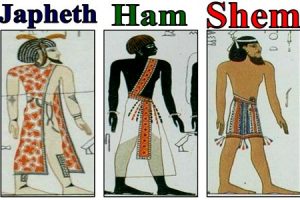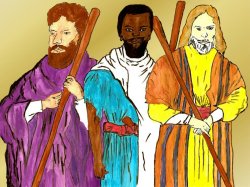Nimrod – The Babylonian system

Nimrod was the founder and a high priest of the Babylonian system. His high priest title that he invented for himself was called pontiff, meaning a bridge maker between this life and the life to come. He was a mighty hunter who hunted animals and human beings, Gen 10:9, and he also murdered those who rebelled against him, in fact when God commanded Abraham in Gen 12:1 to come out of his country, family and father’s house, to come out of the land of Ur of the Chaldeans as in Acts 7:2-4 he was commanding him to come out of Nimrod’s wicked system called Babylon
Nimrod was the very first black leader who ruled over the entire human race, being the very first man who came up with the strategy of war (he was the first man to wage war or mobilize people so that they may wage war against the ones he wanted to plunder, rob and control),
he was also the first one to come up with the concept of the global unit (united the people so that they may build the tower of babel).
In Genesis 11:1-9 he united all the races on the earth, and they began to build a tower of Babel under Nimrod’s evil influence of a democratic movement that was supposed to overthrow God’s purpose and will for man on the earth.
Babel or Babylon was also called the “beginning” of Nimrod ‘s kingdom as it is written in (Genesis10:8-10).
At this point of history there was only one language that was spoken on the face of the whole earth, and this language was called Hebrew.
The word Babel means the gate way of the gods, the illumination and control of the mind through witchcraft, or the worship of many gods, but also this same word means confusion.
From this word Babel derives the word called Babylon.
Nimrod became the first evil dictator, being a man that was possessing the gifts of a sorcerer, a false prophet, a magician and an astrologer, (Nimrod had the ability to spiritually discern,
and interpret the meaning of the stars through his God given gifts, and also predict the future)
Choosing to use all his energies and abilities against His creator, he began to build a government system called Babylon which was spiritually given shape, designed, and established by his spiritual organized movement called the Chaldeans
(His priesthood was made up of twelve priests called the Cardinals, where Nimrod himself was the high priest, and also this movement had a group of different prophets).
Read more about Nimrod’s priesthood and it’s influence over the Roman empire and Catholic Church (the chaldeans), click here to read...
To find out more about Nimrod’s life as it is quoted from the Rabbinic literature click here to read…
Read more




